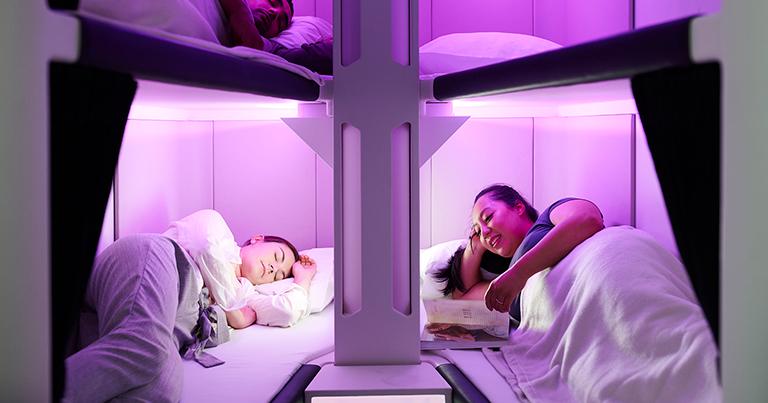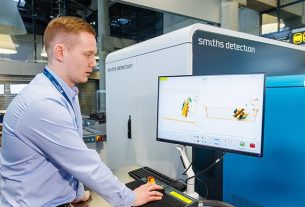Air New Zealand has revealed more details about its Skynest – the world’s first sleep pods in the sky. The airline expects Skynest to be a real game-changer, adding more flexibility to the economy travel experience.
“Our 83-year history is marked by a commitment to innovation and pushing the boundaries of what’s possible,” said Leanne Geraghty, Chief Customer and Sales Officer, Air New Zealand. “SkyNest is the latest example, and we’re proud to be leading the way with this world-first cabin feature. SkyNest has captured the imagination of a global audience and its uniqueness has already been acknowledged by multiple awards – the latest being a finalist in the Crystal Cabin Awards. We’re delighted that customers are as excited about this new innovation as we are. Our extensive research and design process, which spanned five years and 170,000 hours, has resulted in a product that we’re confident will revolutionise the inflight experience for economy passengers.”
Skynest will be launched on ultra-long haul flights, starting with the Auckland-New York and Auckland-Chicago routes. “North America is the perfect market for Skynest, as it has a premium segment that values comfort and sleep during long-haul travel,” said Geraghty. “With our ultra-long haul routes to destinations such as New York and Chicago, Skynest provides a unique and innovative way for our passengers to rest and recharge, making their journey with us even more enjoyable. By launching Skynest on these routes, we are bringing to life our commitment to providing choice, alongside the best possible experience for our passengers, and to continue to innovate and lead the way in the aviation industry.”
Skynest will be a six-pod configured sleep zone that offers sessions for economy passengers to lie down when travelling long haul. It will be available from September 2024. Each pod will include a full-size pillow, sheets and blanket, ear plugs, a separate reading light, personal device USB outlet, ventilation outlet, and lighting designed for rest. Each passenger will be limited to one session, with families travelling on the same ticket able to book a session for each passenger, pending availability.
The zone will be located between Premium Economy and Economy, and each pod will come with a separate seatbelt to ensure passengers can fasten them and stay in the pod should the seat belt sign come on during turbulence. The bedding will be changed between each session, and a 30-minute transition time will be allowed for this. The lights will gently come on at the end of each session, and crew will politely wake any passengers who sleep through this.
“We’re still working through the exact details of how the booking process will work, and we have yet to determine the price,” said Geraghty. “At this stage we are looking at around $400 to $600 for the four-hour period.”


